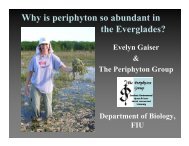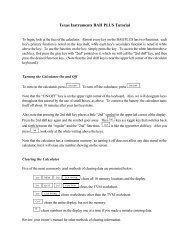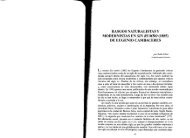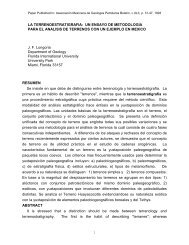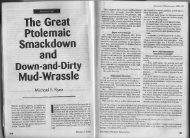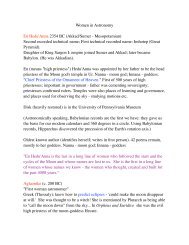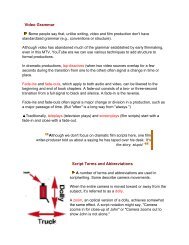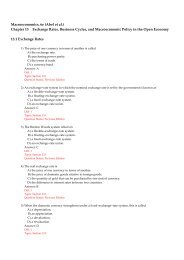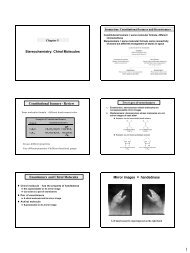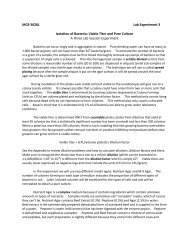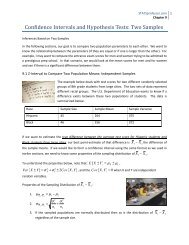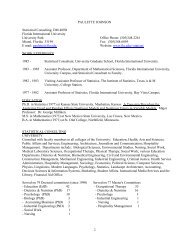Asteroid Comet Impact Hazards - Florida International University
Asteroid Comet Impact Hazards - Florida International University
Asteroid Comet Impact Hazards - Florida International University
Create successful ePaper yourself
Turn your PDF publications into a flip-book with our unique Google optimized e-Paper software.
THE TUNGUSKA METEORITE PROBLEM TODAY<br />
post-war field work under supervision of Florensky, Plekhanov, Zolotov and Vassilyev, found any<br />
explosion or impact astroblems (??) or large fragments of the TCB (Florenskiy, K.P.et al.,1960;<br />
Plekhanov, G.F., 1963; L'vov, Yu.A. et al.,1963; 1963 a ). Search for finely-dispersed cosmic matter in<br />
the soils and peat of the catastrophe area, over 10, 000 km2 (Kirova, O.A., 1961; Florensky, K.P., 1963;<br />
Florensky, K.P., Ivanov, A.V. et al., 1968; Glass, B.P., 1969; 1976; Vasilyev, N.V. et al., 1971; 1973;<br />
1974; 1974 a; 1983; Vypadenie ... 1975; Boyarkina, A.P. et al., 1976; 1976 a , Alexeeva, K.N. et al.,<br />
1977; Kvasnitsa V.N. et al., 1979; Sobotovich, E.V. et al., 1980; 1983; Zbic, M., 1984; Doroshin I.K.,<br />
1988) did not result in discovery of material that could be reliably differentiated from fluctuations of the<br />
bacrground fall of extraterrestrial matter. However, biogeochemical element and isotopic anomalies that<br />
may be related to the event have been discovered in the area of the catastrophe (Kovalevsky, A.F. et al.,<br />
1963; Alexeeva K.N. et al., 1976; Zhuravlev, V.K et al., 1976; Golenetsky, S.P. et al., 1977; 1977 a;<br />
1980; 1981; 1983; Kolesnikov, Kolesnikov, E.M., 1984; 1989; Kolesnikov, E.M. et al., 1979;<br />
Zhuravlev, V.K. et al., 1976).<br />
Increased quantities of microparticles enriched by Cu, Au, Zn and certain other elements in the resin of<br />
the trees in the epicenter area that survived the 1908 catastrophe are very likely related to the Tunguska<br />
event. (Longo, G. et al., 1994).<br />
The post-war expeditions revealed a complex range of ecological consequences of the Tunguska<br />
explosion, namely: 1) accelerated growth of new (post-catastrophe) trees and trees that survived the<br />
event (Nekrasov, V.I.; Emelyanov, Yu. M., 1964; Beregnoi, V.G., Drapkina, G.I., 1964; Shapovalova, R.<br />
D. et al., 1967; Emelyanov, Yu.M., Lukyanov, V.B. et al., 1967; Vasilyev, N.V. et al., 1976; 1980); 2)<br />
population-genetic effects, mainly at the epicenter area and along the TCB trajectory (Dragavtsev, V.A.<br />
et al.,1975).<br />
This is a general outline of the Tunguska phenomenon which, proves to be different in principal from<br />
other impact phenomena. The many hypotheses that have been put forward in an attempt to explain the<br />
Tunguska event can be arranged in two groups. One includes those hypotheses that are based on the<br />
concept of conversion of the kinetic energy of the TCB into shock wave energy. The other group<br />
consists of hypotheses that emphasize a release of the internal energy of the body, whether chemical or<br />
nuclear.<br />
The first group of hypotheses involves the concept of an asteroidal nature of the TCB (Kulik, L.A.,<br />
1933; 1939; 1939; Krinov E.L.,1949; Astapovich, I.S., 1933; Anfinogenov, D.F., 1966; Sekanina, Z;<br />
1983; Chyba, C.F., 1993, Longo G. et al., 1994;), or a cometary nature (Astapovich, I.S., 1933; Whipple,<br />
F.I.W., 1934; Fessenkov, V.G., 1961; 1978; Grigoryan, S.S., 1976; 1979; Korobeynikov, V.P. et al.,<br />
1976; 1980) . These can be classified as hypotheses based on the classical concepts of the minor bodies<br />
of the Solar System.<br />
These latter hypotheses assume a special nature of the TCB, one different from asteroids or comets.<br />
These include the hypotheses of an antimatter nature of the TCB (La Paz, L., 1948; Cowen, C. et al.,<br />
1965); of the Tunguska object being a miniature black hole (Jackson, IV A.A., Ryan, M.P.,1973), or of<br />
http://www.galisteo.com/tunguska/docs/tmpt.html (3 of 14)12/5/2005 4:30:26 PM



